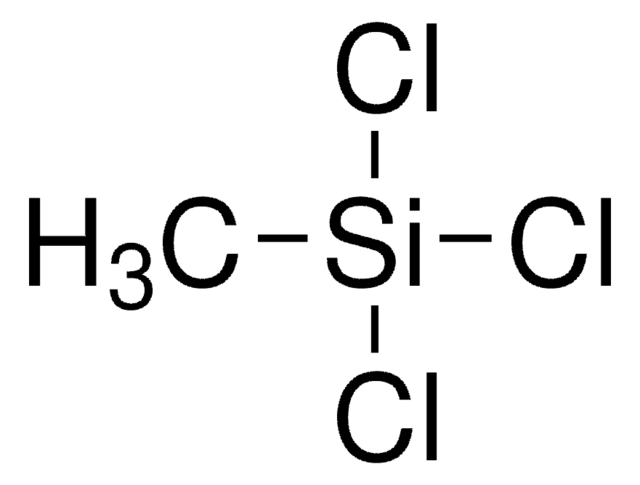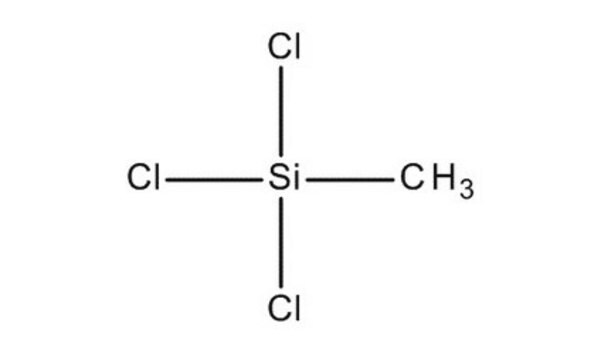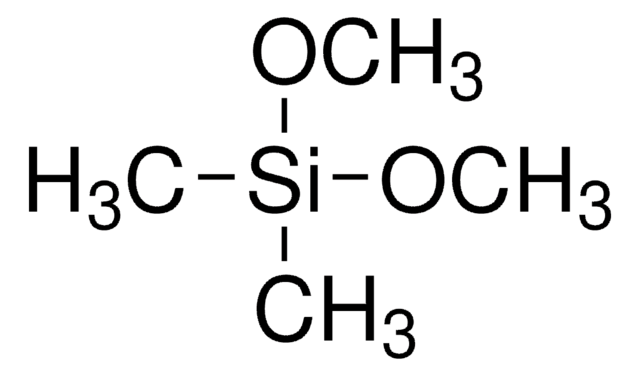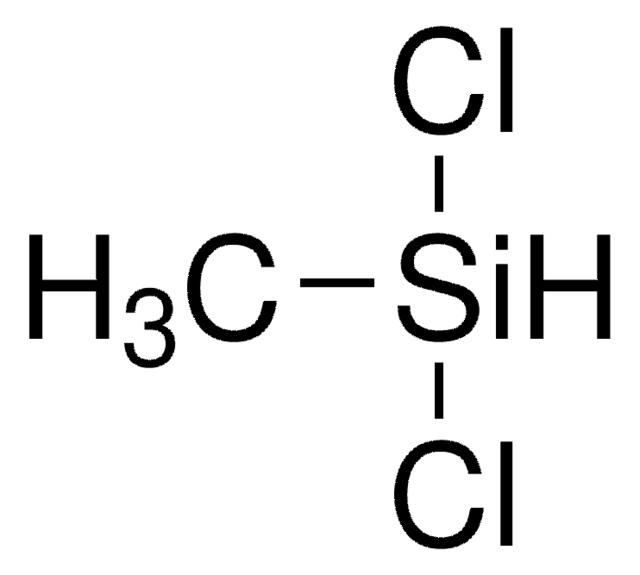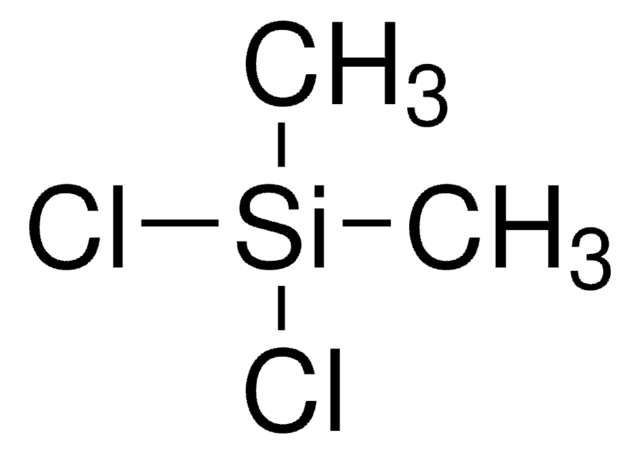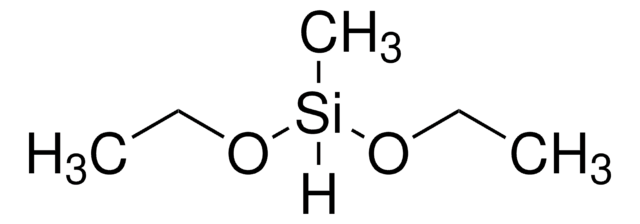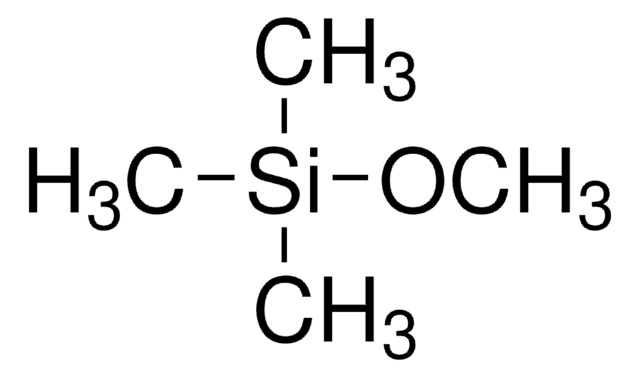679208
Methyltrichlorosilane
deposition grade, ≥98% (GC), ≥99.99% (as metals)
Synonyme(s) :
Trichloro(methyl)silane
About This Item
Produits recommandés
Qualité
deposition grade
Niveau de qualité
Densité de vapeur
5.2 (vs air)
Pression de vapeur
150 mmHg ( 25 °C)
Pureté
≥98% (GC)
≥99.99% (as metals)
Forme
liquid
Température d'inflammation spontanée
>760 °F
Limite d'explosivité
11.9 %
Indice de réfraction
n20/D 1.411 (lit.)
Point d'ébullition
66 °C (lit.)
Densité
1.273 g/mL at 25 °C (lit.)
Chaîne SMILES
C[Si](Cl)(Cl)Cl
InChI
1S/CH3Cl3Si/c1-5(2,3)4/h1H3
Clé InChI
JLUFWMXJHAVVNN-UHFFFAOYSA-N
Vous recherchez des produits similaires ? Visite Guide de comparaison des produits
Mention d'avertissement
Danger
Mentions de danger
Classification des risques
Acute Tox. 3 Inhalation - Acute Tox. 4 Dermal - Acute Tox. 4 Oral - Eye Dam. 1 - Flam. Liq. 2 - Skin Corr. 1A - STOT SE 3
Organes cibles
Respiratory system
Code de la classe de stockage
3 - Flammable liquids
Classe de danger pour l'eau (WGK)
WGK 1
Point d'éclair (°F)
46.4 °F - closed cup
Point d'éclair (°C)
8 °C - closed cup
Faites votre choix parmi les versions les plus récentes :
Déjà en possession de ce produit ?
Retrouvez la documentation relative aux produits que vous avez récemment achetés dans la Bibliothèque de documents.
Articles
Deposition Grade Silanes, fully characterized by chemical analysis and nuclear magnetic resonance (NMR) with greater than 98% purity, for Sol-Gel Processes.
atomic layer deposition (ALD), microelectronics, Mo:Al2O3 films, nanocomposite coating, photovoltaics, semiconductor devices, W:Al2O3 films, composite films, layer-by-layer
Silica is a very popular inorganic nanomaterial used in a wide range of applications including fillers for rubber, catalyst supports, separation media, carriers in food and agriculture, and abrasive/anticaking agents in cosmetics. It is also widely believed to be an important material for biomedical applications for following reasons.
Notre équipe de scientifiques dispose d'une expérience dans tous les secteurs de la recherche, notamment en sciences de la vie, science des matériaux, synthèse chimique, chromatographie, analyse et dans de nombreux autres domaines..
Contacter notre Service technique